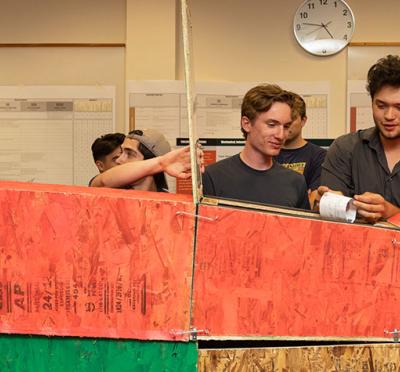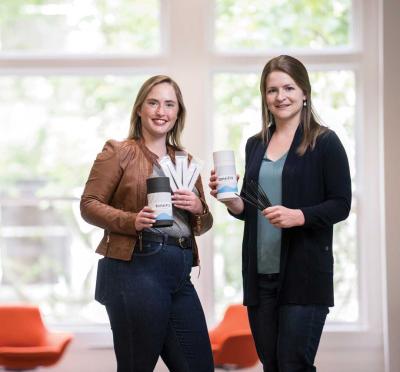
[An audio version of this story is available on the Engineering Out Loud podcast.]
Oregon State University’s Humanitarian Engineering Program focuses on finding science- and technology-based solutions to address basic human needs and improve quality of life particularly for those in underserved communities. One problem the group is tackling stems from one of the most basic of needs: a way to safely cook food.
In most industrialized nations, whenever we want to prepare a meal, or even a quick snack, we can just turn a knob and an electric burner lights up or a clean, blue flame ignites on the stovetop. Yet for nearly half of the residents of Planet Earth, this kind of luxury simply doesn’t exist.
About 40 percent of the world's population is currently burns biomass (wood or other organic material) to prepare their meals and heat their water and homes.
“If you've ever sat around a campfire, you know that biomass fires produce a lot of smoke,” says Nordica MacCarty, assistant professor of mechanical engineering. “And being in the same time and confined space that cooking is happening, women and children are suffering severe health effects because of this necessary practice.”
Indoor air pollution is a huge problem in the developing world, where smoke inhalation and related illnesses are among the leading killers of women and children, accounting for about 4 million premature deaths each year.
But the problem of cookstoves doesn’t stop at its health risk. It’s also a major gender-equity issue. In much of the developing world — and much more so than in advanced industrial countries — women and children perform a disproportionate amount of household labor, like cooking and collecting the fuel wood.
“When they're using inefficient practices like traditional open fires for cooking, they spend a lot more time collecting fuel wood,” says MacCarty. “So a typical woman will spend about two to four hours round-trip to go collect fuel wood and carry that back, often in very heavy loads. These problems are exasperated in regions where the forests are retreating around communities.
And in areas experiencing conflict, MacCarty explains, leaving the safety of places like displaced person or refugee camps is extremely dangerous for women, who are often at a risk of being attacked or hurt in some way.
The technical problem with traditional open-fire cooking is incomplete combustion: Not enough air gets to the fire, and it doesn’t get hot enough, so instead of a clean flame, it produces smoke and carbon monoxide.
In response to this problem, researchers like MacCarty and have developed small, inexpensive technologies that burn the fuel more efficiently and combust it more cleanly. These devices have an insulated combustion chamber where the fuel is mixed with air and smoke is kept in a confined space where it stays hot, and the emissions burn more completely before they exit. They’re also designed to transfer heat more effectively into the cooking vessel.
While researchers have an important role to play in figuring out how to adapt cleaner burning stove technologies to meet the needs of local communities, figuring out how to market those technologies and make them accessible and desirable to end-users isn’t a problem that engineering can solve on its own.
“You're trying to market these devices to people who don't have any disposable income,” says MacCarty. “You're asking people to change their behavior and often times their cooking styles to accommodate this technology.”
To that end, MacCarty has partnered with an Oregon organization called Stove Team International to examine what might be done. Last year, they brought a group of students from mechanical engineering, public policy, and economics to Guatemala. “We looked at cookstoves from an interdisciplinary perspective and evaluated their performance when we were working with local cooks doing controlled cooking tests.” The team also surveyed rural homes to better understand the needs cookstove users.
And MacCarty and her team aren’t settling with simply improving cookstove technology for use in the household kitchen.
“One of the most exciting things that's happened recently is that we're partnering with InStove, which is another nonprofit based here in Oregon,” she says.
InStoves have the ability to be equipped with other devices, like medical tool sterilization autoclaves and rapid water pasteurization systems that require only about a pencil's weight of wood per liter of water.
For their work with institutional cookstoves and water pasteurization, InStove and Nordica’s team won the Impact Invention Award from the Lemelson Foundation at the Elevating Impact Summit sponsored by Portland State University. The team hopes to perform field trials with this technology this coming summer, hopefully in Haiti.
“It's really the Humanitarian Engineering Program at Oregon State that attracted me to come here,” says MacCarty. “I really believe in using engineering to benefit low-resource populations.”



